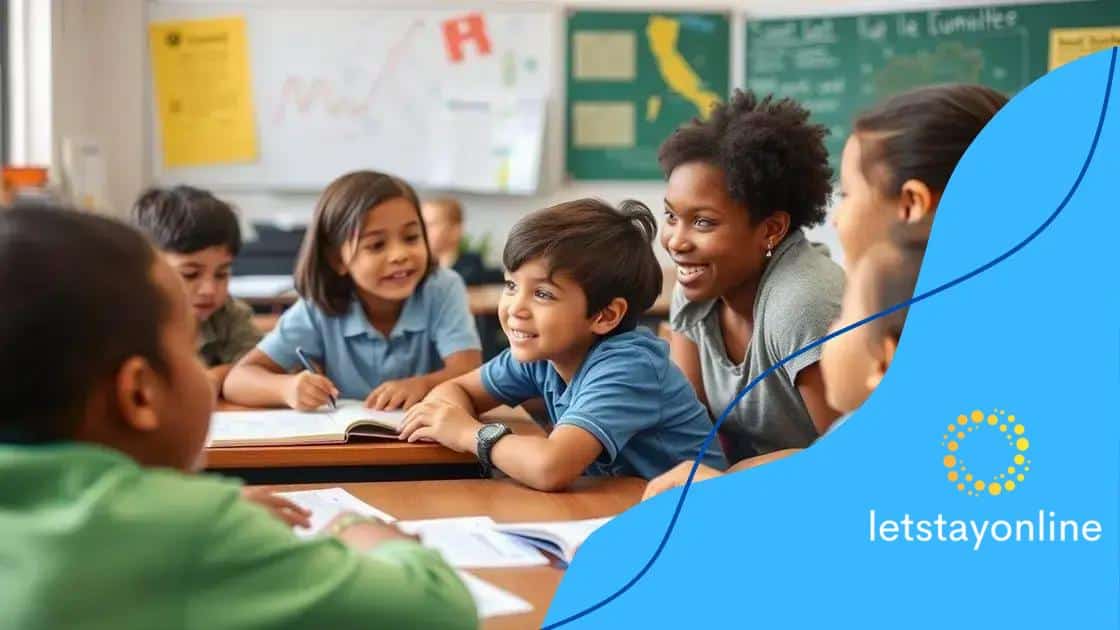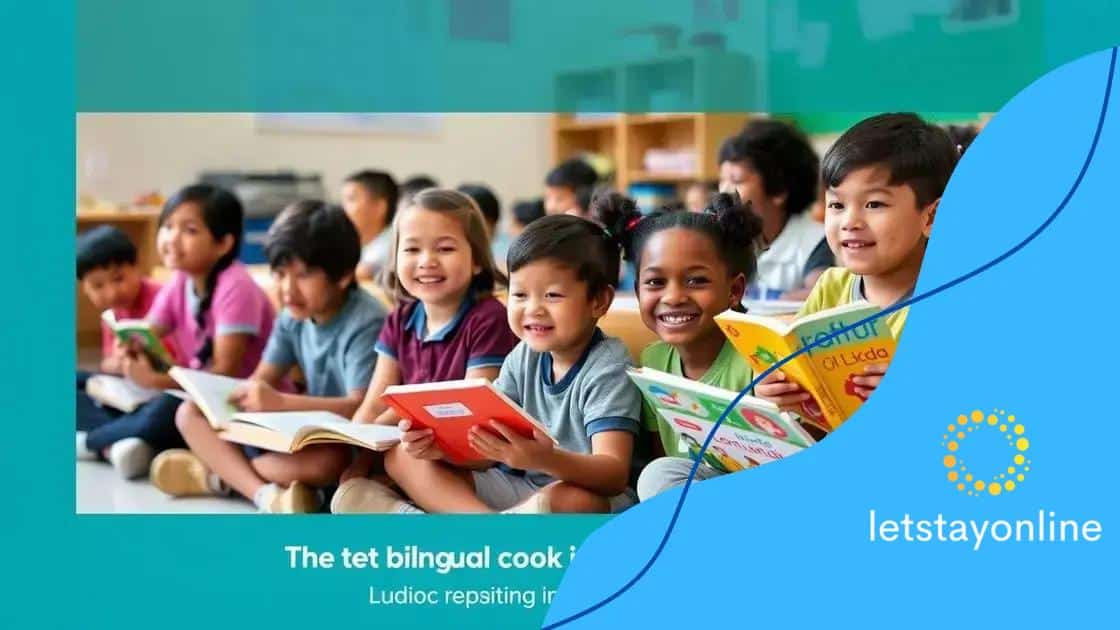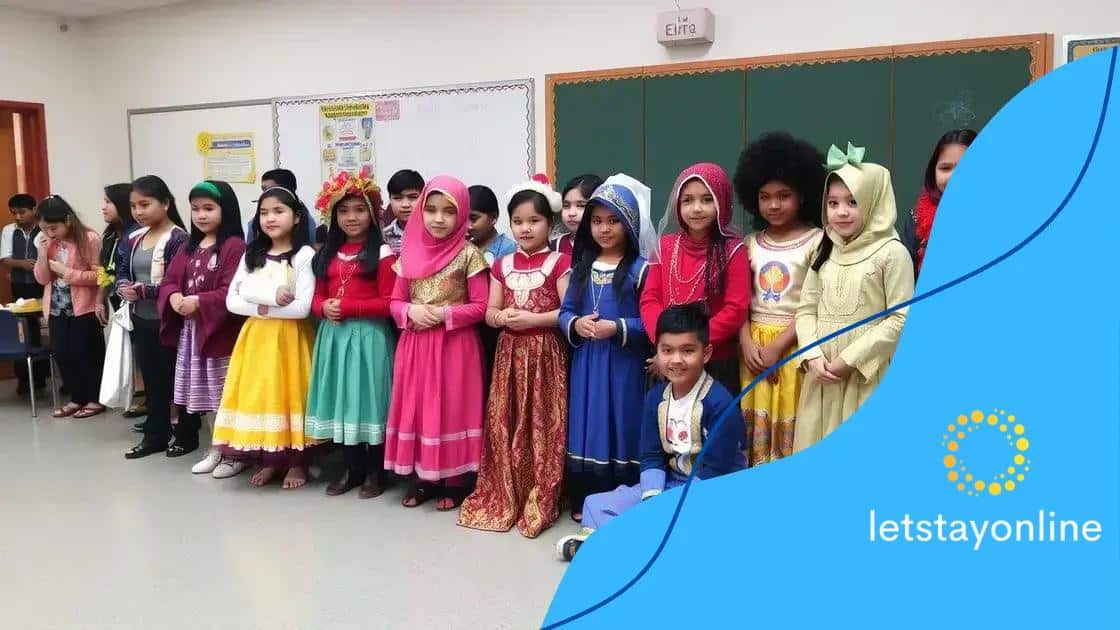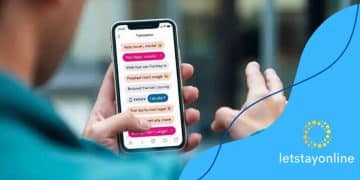The growth of bilingual education programs in the US

The growth of bilingual education programs in the US enhances language skills, fosters cultural understanding, and prepares students for a globalized world, while addressing challenges such as funding and teacher training.
The growth of bilingual education programs in the US has become a significant trend in schools across the nation. Have you ever wondered how these programs can enhance learning experiences for students? Let’s explore what makes bilingual education so important today.
Understanding bilingual education programs
Understanding bilingual education programs is essential as they play a crucial role in today’s diverse educational landscape. These programs help students learn in two languages, which can enrich their educational experience.
Bilingual education integrates students from various linguistic backgrounds. This creates a supportive learning environment where children can thrive academically while also embracing their cultural identities.
What is Bilingual Education?
Bilingual education refers to teaching academic content in two languages. Often, the primary goal is to ensure that students become proficient in both languages. This approach is not just about language use; it also involves teaching core subjects like math and science.
Key Features of Bilingual Programs
- Instruction is delivered in both the native language and the target language.
- Focus on developing literacy skills in both languages.
- Encourages cultural awareness and appreciation.
- Aims to boost cognitive skills alongside language learning.
In bilingual education, there are various models, such as transitional, maintenance, or immersion programs. Each model has distinct approaches to integrating language learning with subject matter. In transitional programs, students initially receive instruction in their native language, gradually shifting to English. Maintenance programs, however, aim to preserve students’ native languages while developing English proficiency.
Immersion programs are another prevalent type, where students are immersed in a new language. In these settings, instruction is primarily delivered in the second language, providing a rich environment for natural language acquisition.
Bilingual education also supports cognitive development. Research suggests that students in these programs often outperform their peers in critical thinking and problem-solving skills. This occurs because navigating two languages enhances cognitive flexibility.
Benefits of Bilingual Education
- Improves academic performance across subjects.
- Enhances social skills and cultural understanding.
- Prepares students for a globalized world.
- Boosts employment opportunities in the future.
As the United States becomes increasingly multicultural, the demand for bilingual education grows. Schools are recognizing its significance in fostering inclusivity and preparing students for a diverse society. The outcomes of these educational programs extend beyond academic achievements, supporting personal growth and intercultural connections.
Benefits of bilingual education

Benefits of bilingual education are numerous and impactful. These programs provide students with advantages that extend beyond language skills. By learning in two languages, students can enhance their cognitive abilities and cultural awareness.
Bilingual education often leads to better academic performance. Research shows that students in these programs frequently excel in subjects such as math and reading. This is because bilingual learners develop stronger problem-solving skills as they switch between languages.
Academic Advantages
Students engaged in bilingual programs benefit from a dual-focus approach to learning. They not only learn the content in their native language but also gain skills in a second language. This dual approach enhances their understanding and retention of the material.
- Improved literacy rates in both languages.
- Higher standardized test scores.
- Better comprehension of complex topics.
- Increased critical thinking skills.
Besides academic performance, bilingual education also offers social benefits. Students in these programs encounter diverse backgrounds, promoting inclusion and empathy. Interacting with peers from various cultures cultivates mutual understanding and respect.
Long-term Career Benefits
As individuals transition into the workforce, being bilingual becomes a valuable asset. Many employers seek candidates who can communicate in multiple languages. Bilingual individuals often have a competitive edge, leading to greater job opportunities and higher salaries.
- Increased employability in a global job market.
- Higher potential for leadership roles.
- Ability to serve diverse customer bases.
- Enhanced communication skills.
Furthermore, bilingual education fosters a sense of cultural identity. Students learn to appreciate their heritage while exploring new cultures. This duality enriches their personal development and broadens their worldviews.
All these benefits come together to create a strong case for the implementation and support of bilingual education programs. As our society becomes more interconnected, the importance of these programs will only continue to grow.
Challenges faced in implementation
Challenges faced in implementation of bilingual education programs can be significant. While these programs offer great benefits, various obstacles can hinder their success. Understanding these challenges is crucial for creating effective solutions.
One of the primary challenges is the lack of funding. Many schools struggle to secure the necessary financial resources to support bilingual programs. Without proper funding, essential materials and qualified teachers may be in short supply.
Teacher Training Issues
Another challenge lies in the availability of well-trained teachers. Educators often need specialized training to effectively teach in bilingual settings. Not all teachers are equipped to handle the complexities of instructing students in two languages.
- Limited access to professional development opportunities.
- High turnover rates among bilingual educators.
- Difficulty in recruiting qualified bilingual staff.
- Need for ongoing support and resources for teachers.
Cultural differences can also pose a barrier to implementation. Some communities may have varying attitudes towards bilingual education. It’s important for schools to engage with families and communities to explain the benefits and address any concerns they may have.
Sustaining Parental Involvement
Another challenge is maintaining parental involvement in bilingual education programs. Families play a key role in their children’s education. However, barriers such as language differences and lack of communication can lead to disengagement.
- Parents may feel intimidated by not speaking English.
- Limited outreach by schools to involve parents.
- Diverse levels of education among parents.
- Time constraints affecting parents’ ability to participate.
Additionally, balancing the curriculum to meet the needs of bilingual students can be complex. Schools must ensure that students receive adequate instruction in both languages while covering essential content areas. This requires careful planning and collaboration among educators.
As education systems evolve, understanding and addressing these challenges is essential for the success of bilingual education programs. Continuous dialogue, community engagement, and adequate resources will be key in overcoming these obstacles.
Cultural impacts of bilingual education

Cultural impacts of bilingual education extend far beyond the classroom. These programs not only help students learn a second language, but they also promote diverse cultural understanding. As students become proficient in more than one language, they gain insights into different cultures.
One significant cultural impact is the fostering of cultural pride. Bilingual education encourages students to embrace their heritage while learning another language. This pride strengthens their identity and helps them appreciate their roots.
Enhancing Cultural Awareness
Furthermore, bilingual education broadens students’ perspectives. By learning about other cultures, students develop empathy and respect for diversity. This awareness can lead to healthier social interactions and reduced prejudice among peers.
- Exposure to diverse traditions and practices.
- Opportunity to celebrate different cultural events.
- Encouragement of open dialogues about cultural differences.
- Development of cross-cultural friendships.
A key aspect of bilingual education is its role in creating an inclusive environment. When students see their languages and cultures represented in the classroom, they feel valued and understood. This representation fosters a sense of belonging and community within the school.
Promoting Global Citizenship
Bilingual education also prepares students to be global citizens. In today’s interconnected world, understanding multiple cultures is essential. Students learn to navigate diverse cultural contexts, making them more adaptable and open-minded.
- Preparation for international and multicultural workplaces.
- Enhanced ability to communicate with people from various backgrounds.
- Stronger critical thinking skills in dealing with complex global issues.
- Development of lifelong learning habits regarding cultural differences.
As bilingual education programs continue to grow, their cultural impacts will resonate throughout society. These programs create bridges between communities, fostering understanding and collaboration. By appreciating different cultures, students are better equipped to contribute positively to a diverse world.
Future trends in bilingual education
Future trends in bilingual education show a promising direction as more schools recognize the importance of teaching multiple languages. These trends are shaping how educators approach language learning and the benefits students receive.
One significant trend is the increasing use of technology in bilingual education. Online resources and language learning apps enhance the learning experience. With technology, students can practice languages through interactive tools, making learning more engaging and effective.
Increase in Multilingual Programs
Another trend is the rise of multilingual programs. Schools are beginning to recognize that teaching more than two languages provides even greater benefits. Early exposure to multiple languages can enhance cognitive flexibility and cultural awareness, preparing students for a globalized world.
- Integration of third or fourth languages into curricula.
- Focus on cultural exchange programs.
- Collaboration with international institutions.
- Development of more comprehensive language assessments.
Additionally, there is a growing emphasis on cultural competence in bilingual education. Programs are being designed to not only teach a language but also to address the cultural contexts of that language. This helps students understand and appreciate the cultures associated with the languages they are learning.
Community Involvement
Future trends also include increased community involvement in bilingual education. Schools are fostering partnerships with local communities to support language learning. Engaging families and community members can enhance the educational experience for students and help bridge cultural gaps.
- Workshops for parents on supporting bilingualism at home.
- Community events celebrating linguistic diversity.
- Collaborative projects with local organizations.
- Resources for families in multiple languages.
As bilingual education evolves, teacher training will become more specialized. Educators will need ongoing professional development to stay updated on best practices and new technologies. This focus on quality training will ensure that teachers are equipped to meet the needs of diverse learners.
Overall, the future of bilingual education looks bright. With advancements in technology, an emphasis on cultural competence, and stronger community ties, students will have more tools and opportunities to succeed in a multilingual world.
FAQ – Frequently Asked Questions about Bilingual Education
What are the main benefits of bilingual education?
Bilingual education improves language skills, enhances cultural understanding, and prepares students for global opportunities.
How does technology influence bilingual education?
Technology provides interactive tools and resources that make language learning more engaging and accessible for students.
What challenges do schools face when implementing bilingual programs?
Common challenges include lack of funding, need for trained teachers, and ensuring community involvement.
What future trends can we expect in bilingual education?
Future trends include the rise of multilingual programs, greater emphasis on cultural competence, and increased community collaboration.






